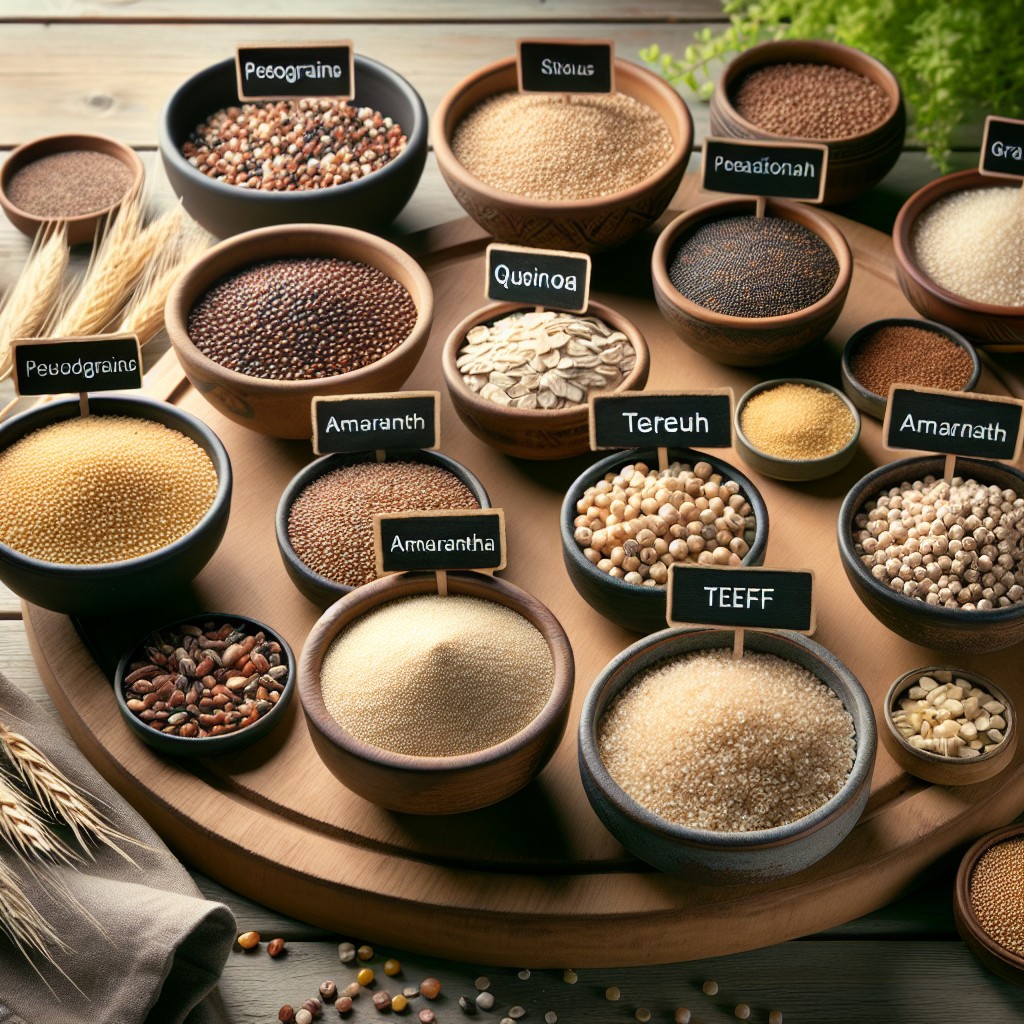Pseudograins, also known as pseudo-cereals, are gaining popularity among health-conscious individuals looking for grain alternatives. These nutritious powerhouses offer a wide array of health benefits and can add variety to your diet. In this article, we will introduce you to some of the better-for-you pseudograins and help you discover new grain alternatives that can elevate your meals to new heights.
1. Quinoa: The Most Popular Pseudograin
Quinoa is one of the most well-known pseudograins, and for a good reason. This versatile grain alternative is a complete protein, rich in essential amino acids, making it an excellent choice for vegans and vegetarians. Quinoa is also gluten-free, providing a safe option for those with gluten sensitivities or celiac disease. Additionally, it is packed with fiber, vitamins, and minerals, including iron, magnesium, and manganese.
2. Amaranth: A Nutritional Powerhouse
Amaranth is another pseudograin worth exploring. This ancient grain alternative boasts impressive nutritional credentials. It is high in protein and contains all nine essential amino acids, making it an excellent plant-based protein source. Amaranth is also rich in fiber, calcium, potassium, and iron, giving it a well-rounded nutrient profile. Its slightly nutty flavor and delicate texture make it a great addition to baked goods, salads, and porridges.
3. Buckwheat: Not Just for Pancakes
Contrary to its name, buckwheat is not related to wheat and is gluten-free. It is a versatile pseudograin that can be enjoyed in various forms, including groats, flour, and noodles. Buckwheat is an excellent source of dietary fiber, providing a feeling of fullness and aiding in digestion. It is also rich in minerals such as manganese, magnesium, and copper. Buckwheat's distinct nutty flavor makes it a popular choice for pancakes, but it can also be used in soups, pilafs, and salads.
4. Teff: The Mighty Mini Grain
Originating from Ethiopia, teff is the smallest grain in the world, but don't let its size fool you. This tiny powerhouse is loaded with nutrients. Teff is an excellent source of resistant starch, a type of dietary fiber that acts as a prebiotic, nourishing the beneficial gut bacteria. It is also packed with protein, iron, and calcium. Due to its mild, nutty flavor and fine texture, teff flour is often used in gluten-free baking. Teff can also be cooked as a porridge or used as a base for stews and pilafs.
5. Millet: A Gluten-Free Staple
Millet is a versatile pseudograin that has been a dietary staple in many parts of the world for thousands of years. This gluten-free grain alternative is rich in fiber, magnesium, and antioxidants. It is also a good source of B vitamins, including niacin and thiamin. Millet can be cooked as a side dish, added to soups, or ground into flour for baking purposes. Its mild, slightly nutty flavor makes it a popular choice for both savory and sweet dishes.
6. Sorghum: A Nutrient-Packed Grain Alternative
Sorghum is a cereal grain that has gained recognition as a pseudograin due to its nutritional content and gluten-free nature. It is high in fiber, protein, and antioxidants, making it an excellent choice for those looking to boost their nutrient intake. Sorghum can be cooked and enjoyed as a side dish, used as a flour substitute in baking, or popped like popcorn for a wholesome snack. Its neutral flavor profile makes it a versatile ingredient for both sweet and savory recipes.
In conclusion, pseudograins offer a range of health benefits and can be wonderful grain alternatives for those seeking to diversify their diet. From the popular quinoa to the nutrient-packed sorghum, there are numerous options to explore. Incorporating these better-for-you pseudograins into your meals can not only add variety but also enhance the nutritional value of your dishes. So, it's time to get creative and discover the exciting world of new grain alternatives.

Share This Article
More Articles You Might Like
Discover More Content
Explore our collection of articles across various topics and categories. From cutting-edge technology insights to wellness wisdom, we curate the best stories to expand your horizons.
Article ID: 149